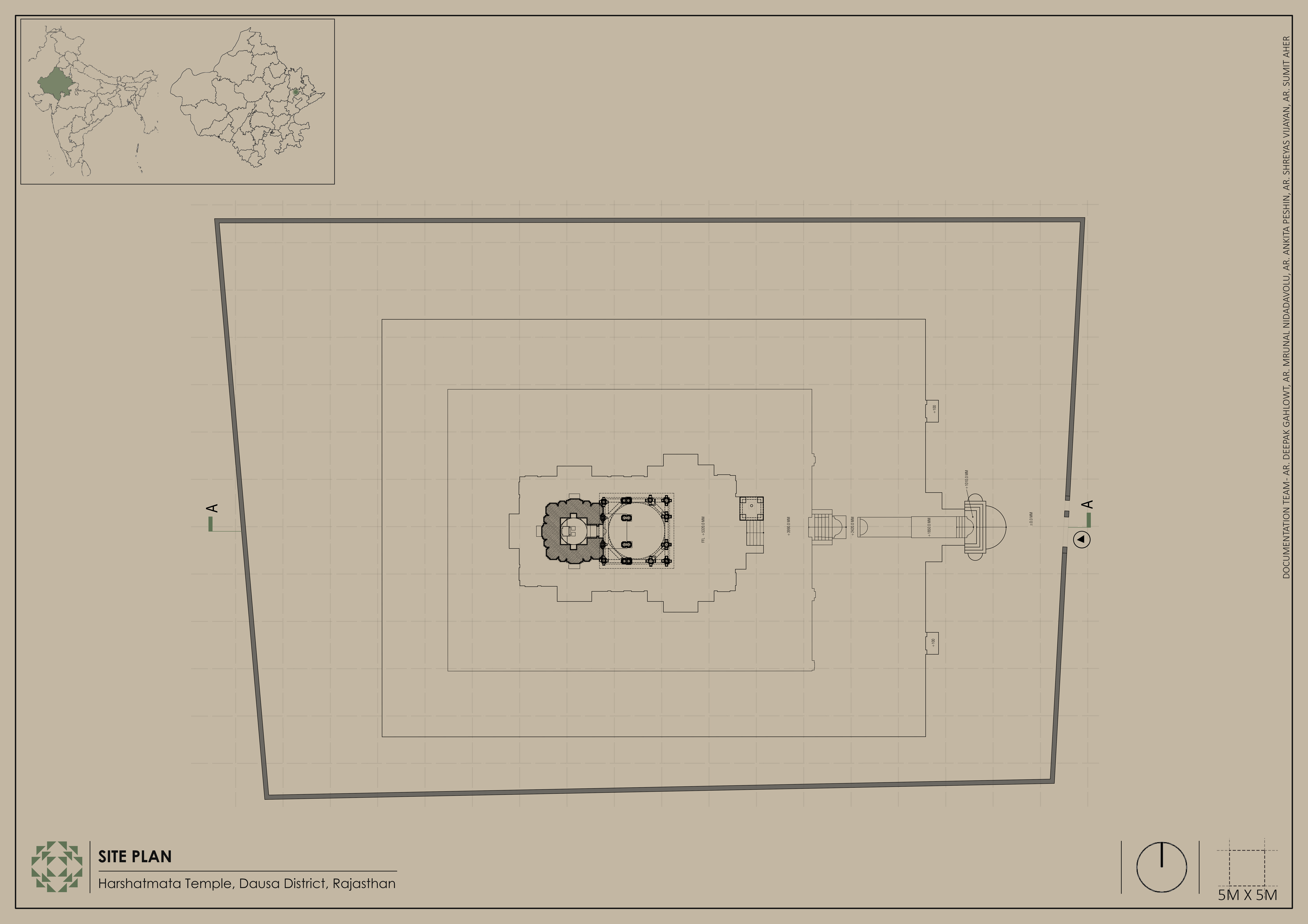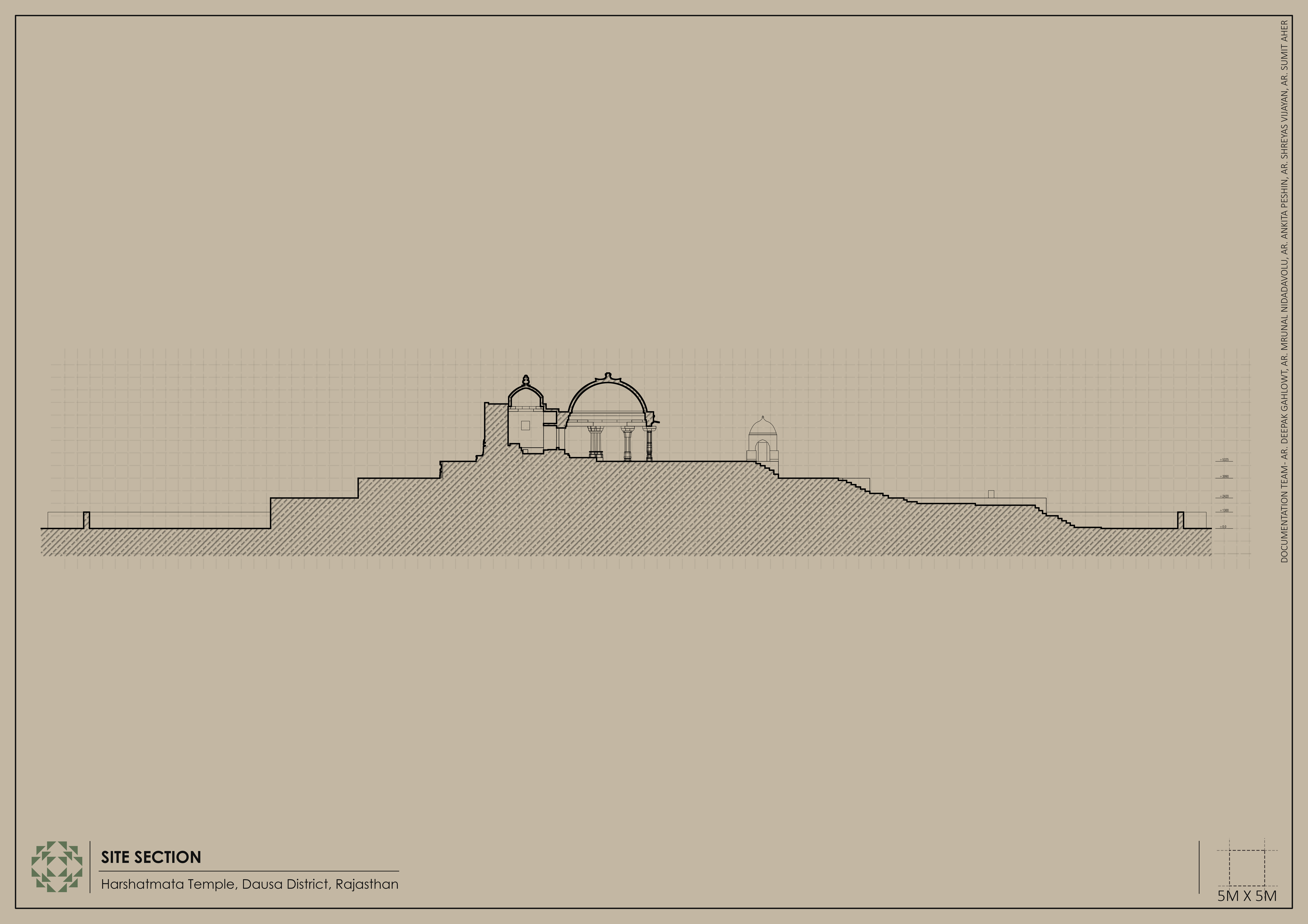Harshatmata Temple: Architectural drawings
By Ar Deepak Gahlowt and his team*
The present architectural remains of the Harshatmata Temple imply that it was a sandhara temple, i.e., a pradakshina patha (circumambulatory path) incorporated between the mulaprasada (main shrine) and the outer encasing walls of the temple. With an entrance to the east, it stands on a double jagati (terrace), accessible via a sopanamala (staircase). The temple structure sits above the mancha (dias) level at the top of the two terraces. The garbhagriha (sanctum sanctorum) is tri-anga (three planes of offsets) and pancharatha (with five offsets from kona to kona on a given side) in the plan. Supporting an early form of anekandaka (multi-spired) superstructure, the sanctum is preceded by a gudhamandapa (closed hall), which retains some surviving pillars and pillar bases. This gudhamandapa, also square, shares similar interior dimensions as the garbhagriha. The superstructure was later rebuilt as a simple dome.


